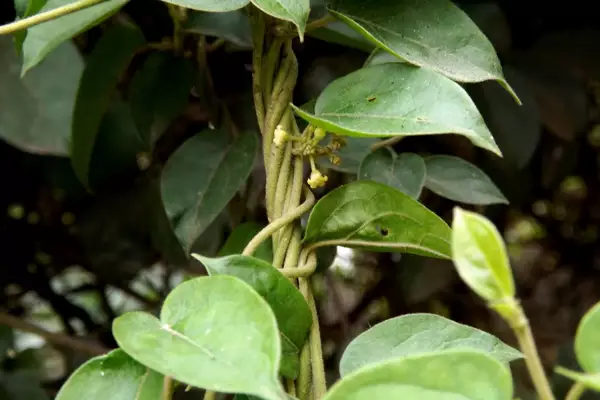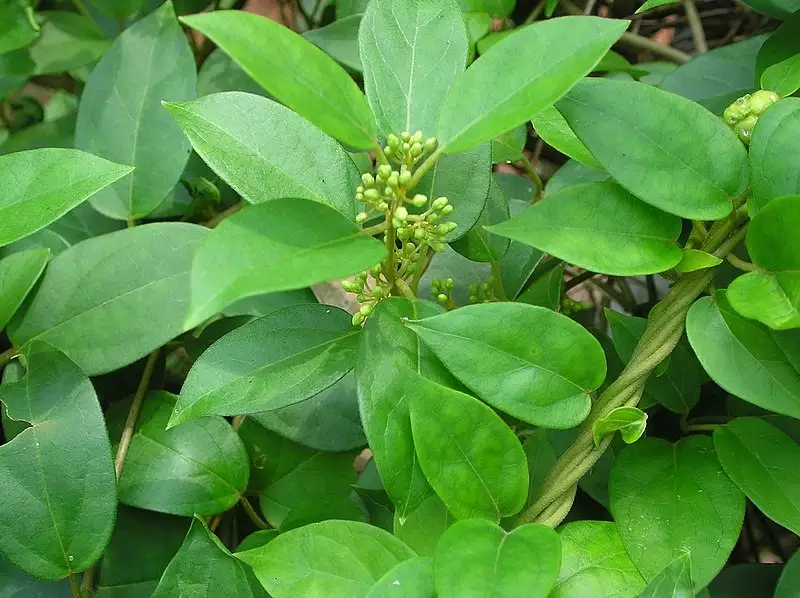Researchers found Gymnema sylvestre (commonly known as Gurmar) at Brahmayoni Hill in Gaya, Bihar as an anti-diabetic herb.
About Gurmar (Gymnema Sylvestre):
- Also known as Meshashringi in Ayurveda, gurmar is a herb known for its ability to lower blood sugar levels.
- This effect is primarily due to gymnemic acid, which blocks receptor sites in the intestines, and reduces the absorption of sugar molecules.
- Beyond its anti-diabetic properties, Gurmar is rich in flavonoids and saponins, which play a important role in regulating lipid metabolism.
- Flavonoids act as powerful antioxidants, while saponins are known to help lower cholesterol levels.
- The herb’s medicinal significance is recognized in both traditional and modern practices, with its inclusion in the anti-diabetic ayurvedic formulation BGR-34.
Therapeutic Uses:
- Gurmar is known for its hypoglycemic (blood sugar-lowering), astringent, stomachic, antiperiodic, diuretic, tonic, and refrigerant properties.
- It is traditionally used as a destroyer of glycosuria (excess sugar in urine) and is believed to neutralize excess sugar in the body.
- Additionally, it is used to treat various urinary disorders.
Characteristics:
- Gurmar is a gregarious woody climber who is highly branched and often running over the tops of tall trees.
- The plant features pubescent young stems and branches.
- Its leaves are ovate-elliptic and pubescent on both sides with a rounded or heart-shaped base.
- Flowers appear in umbellate cyme inflorescences with yellow corolla and thick and recurved lobes.
- The plant produces follicles that are up to 7.5 cm long and 1 cm broad, with narrowly ovoid seeds–oblong.
Distribution:
- Gymnema sylvestre is widespread in the tropical zones of India, and particularly common in central and southern regions.
- The plant thrives in tropical and subtropical humid climates, especially in the hills of evergreen forests.
Climate and Soil Requirements:
- Gurmar grows best in a tropical, humid climate and prefers sandy loam soil.
- It can also be cultivated in a variety of soils, including gravelled soil.
Ref: Source
| UPSC IAS Preparation Resources | |
| Current Affairs Analysis | Topperspedia |
| GS Shots | Simply Explained |
| Daily Flash Cards | Daily Quiz |
Frequently Asked Question:
What is Gurmar used for?
Gurmar is primarily used to manage diabetes by lowering blood sugar levels.
How does Gurmar help in diabetes?
Gurmar contains gymnemic acid, which reduces sugar absorption in the intestines.
What does gurmar do for the body?
Gurmar (Gymnema sylvestre) helps the body by lowering blood sugar levels, reducing sugar absorption in the intestines, and curbing sugar cravings. It also supports lipid metabolism, which can help in lowering cholesterol levels and improving overall metabolic health.


